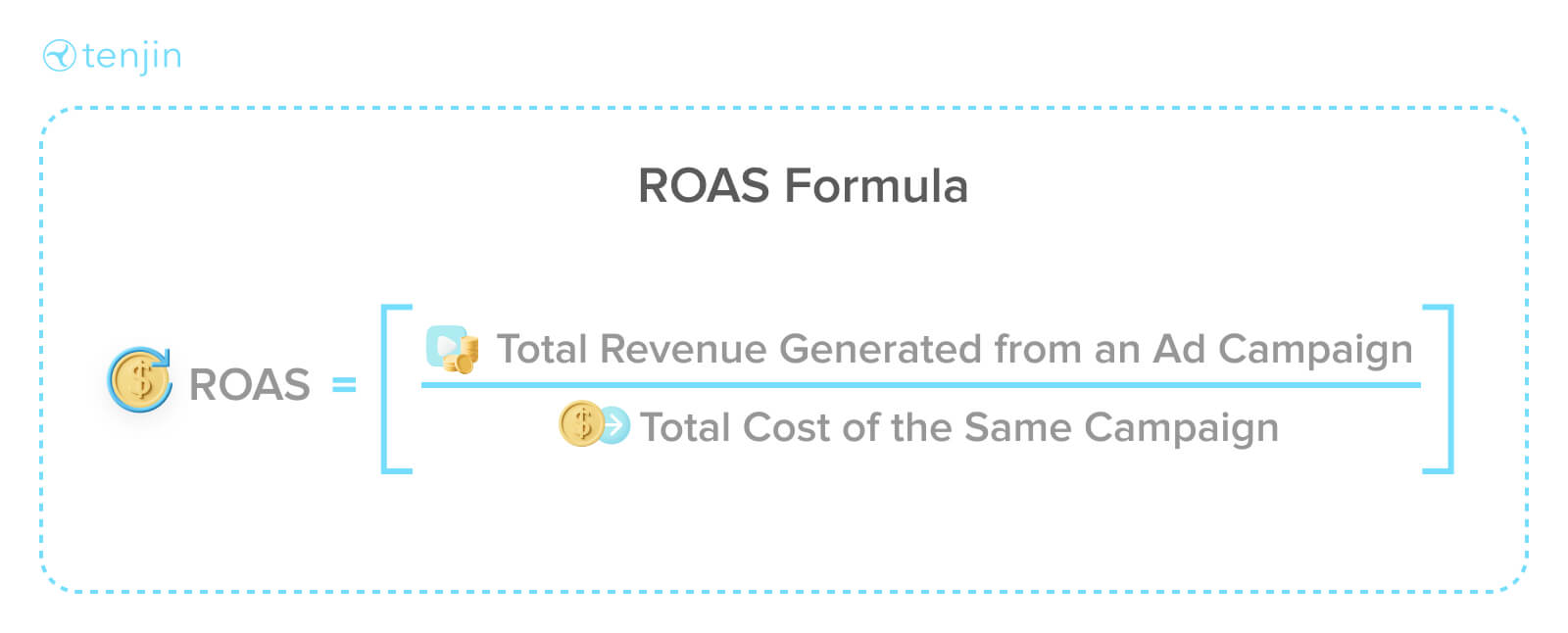ROASはReturn on Advertising Spendの略で、広告キャンペーンの効果を測定するために使用される指標です。 広告キャンペーンから生み出された総収益を、同じキャンペーンの総コストで割って計算されます。 言い換えれば、ROASは、広告キャンペーンに費やされた1ドルに対してどれだけの収益が生み出されるかの尺度です。
ROASが重要な理由は?
ROASは、広告キャンペーンの効率を測定するため、重要です。 ROASを追跡することで、マーケターはどのキャンペーンが最良の結果をもたらし、どこに注力すべきかを判断できます。 さらに、ROASを使用して、さまざまなキャンペーンのパフォーマンスを比較し、どのチャネルが最も収益性が高いか、どのキャンペーンを最適化する必要があるかを確認できます。
ROASの計算方法は?
ROASは、広告キャンペーンから生み出された総収益を、同じキャンペーンの総コストで割って計算されます。 たとえば、広告キャンペーンが500ドルの収益を生み出し、キャンペーンの総コストが100ドルの場合、ROASは5になります(500ドル/100ドル= 5)。
TenjinのROASの計算方法は?
平均N日ROAS率(%)は、インストールからN日後の累積総収入を支出で割った金額です。具体的には
100 * (N日間の総収入 / 支出額)

TenjinのダッシュボードにはどのようなROAS指標が含まれていますか?
TenjinのダッシュボードにあるROASメトリクスの全リストとその説明はこちらをご覧ください。
良いROASとは何か?
この質問に対する答えは、ビジネスの種類やキャンペーンの目標によって異なります。一般的に、良いROASとは業界の平均ROASよりも高いものですが、正確な数値は個々のビジネスやキャンペーンによって異なります。
ROASを向上させるには?
ROASを改善するには、ターゲティングから広告自体まで、広告キャンペーンのあらゆる側面を最適化する必要があります。マーケティング担当者は、まずオーディエンスのセグメンテーションから始め、最も収益性の高いセグメントをターゲティングし、セグメントごとに異なる広告を作成する必要があります。さらに、マーケティング担当者は広告のさまざまなバリエーションをテストして、どの広告が最もパフォーマンスが高いかを判断する必要があります。最後に、マーケティング担当者はキャンペーンを定期的にモニターし、必要に応じて変更を加え、希望のROASに到達していることを確認する必要があります。
Tenjinの広告メディエーションベースのROASとセッションベースのROASの違いは?
こちらをご確認ください。